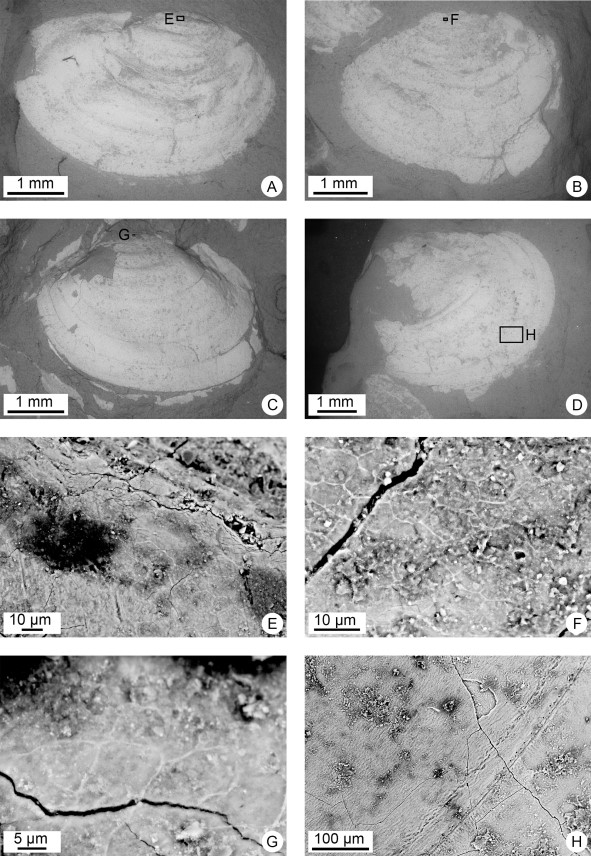
A new spinicaudatan species Ordosestheria chottsensis from the lower Barremian uppermost Bouhedma Formation of southern Tunisia.
Spinicaudatans are large, bivalved crustaceans, which are common components of temporary water bodies, such as inland ponds, floodplain pools, rice field or margins of large lakes. But they can also occur in more saline environments such as large playa lakes and coastal salt flats. Their life cycle is relatively short. Some species can finish their life cycle within two to three weeks, i.e. from hatching from the eggs to the oviposition. Fossil spinicaudatans are often recovered from fine lacustrine mudstones and shales. Because of their wide distribution and quick evolution, fossil clam shrimps are very useful for the subdivision and correlation of non-marine strata.
The non-marine Lower Cretaceous strata extend from Morocco to Egypt across the Saharan African, and were deposited along the southern shoreline of the Neotethyan Ocean. The dinosaur fossils from these strata provided important evidence for the breakup of Gondwana and the progressive isolation of the African continent. The non-marine sequences are also of an important socioeconomic importance as one of the global largest freshwater aquifer systems in one of the most arid regions in the world.
Recently, Prof. LI Gang’s working group from Nanjing Institute of Geology and Palaeontology, Chinese Academy of Sciences and scientists from Tunisa have recovered spinicaudatan Ordosestheria chottsensis from the lower Barremian Bouhedma Formation in the northern Chotts range of southern Tunisia. Ordosestheria was first described from the lower Aptian Jingchuan Formation of the Ordos Basin in northwestern China. The early Barremian occurrence of the genus in Tunisia suggests that ordosestheriids have most likely originated in North Africa and then dispersed to East Asia in the Aptian to become a component of the well-known Jehol Biota. Moreover, the occurrence of fossil spinicaudatans in two horizons respectively from the Bouhedma and Sidi Aïch formations indicates the interaction of freshwater and marine conditions that characterized the northern African margin as part of widespread complex paralic environments over the Chotts and Gafsa areas during the Barremian.
This research was funded by Tunisian Ministry of Scientific Research, Major Basic Research Projects of the Ministry of Science and Technology, China (973 Project), and National Natural Science Foundation of China.
Related information of this paper: Li, G., Boukhalfa, K., Teng, X., Soussi, M., Ben Ali, W., Ouaja, M., Houla, Y. 2017. New Early Cretaceous clam shrimps (Spinicaudata) from uppermost Bouhedma Formation of northern Chotts range, southern Tunisia: Taxonomy, stratigraphy and palaeoenvironmental implications. Cretaceous Research 72: 124-133.

